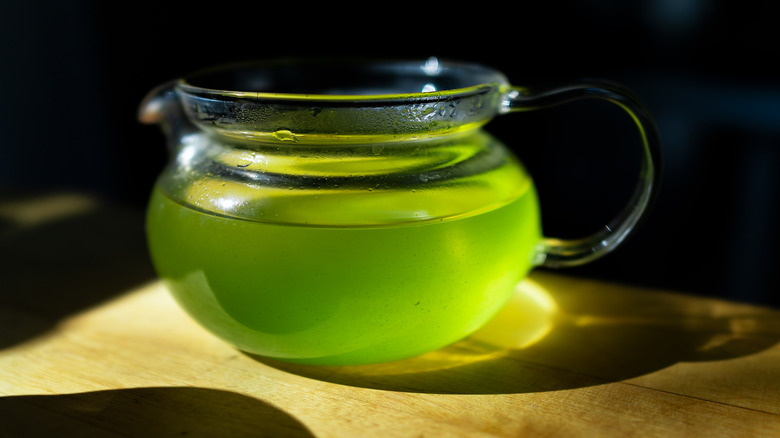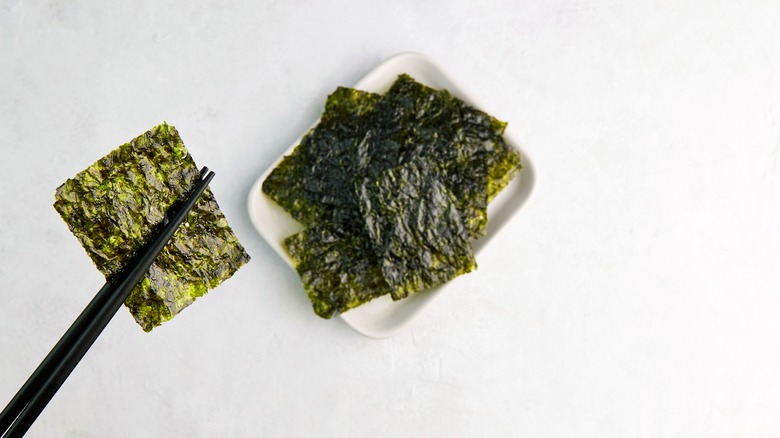The Rich History Of Yamamotoyama, One Of Japan's Oldest Tea Companies
When the Yamamoto family moved to Tokyo and established a small tea shop that would blossom into the Yamamotoyama tea company in 1690, the world looked a little different. The Golden Age of Piracy was just getting underway and the first trading post at the site of modern-day Kolkata was founded (via Chicago Public Library). Today, the Yamamotoyama brand has not only failed to go under in the 300-plus years since, its reputation has only improved.
The company was launched by Kahei Yamamoto, who learned how to steam and dry tea leaves to make Sencha, a type of green tea prepared by pouring hot water over whole tea leaves (via Yamamotoyama). According to Google Arts and Culture, Sencha was developed in the mid-17th century, shortly before Yamamoto founded his shop, by a Buddhist monk named Ingen. Today, Sencha accounts for approximately 80% of tea consumed in Japan. Aside from Sencha, the most popular style of green tea is matcha, which consists of powdered tea leaves typically whisked into a frothy blend.
Yamamotoyama is renowned for its green tea and nori seaweed
The greatest breakthrough for Yamamotoyama came in 1835 when the new proprietor, also named Kahei Yamamoto, developed a new type of green tea he called "gyokuro," meaning "jade dew" (via My Japanese Green Tea). Gyokuro differs from the typical Sencha tea in that it is shielded from sunlight during the final stage of the growing process to enrich its taste. This works because green tea draws flavor from an amino acid called L-theanine that breaks down during photosynthesis. Keeping the crops away from the sun halts photosynthesis, preserving higher L-theanine levels and a richer umami flavor that has made gyokuro one of the most prized (and expensive) teas in Japan.
In 1949, a mere 259 years into the company's history, Yamamotoyama expanded its business and began producing nori seaweed. The company had briefly been involved in the Washi paper industry — Washi being a traditional type of paper made from the fibers of shrubs native to Japan, per Washi Arts. As Yamamotoyama tells it, somebody figured out that the same machines used to make Washi paper could be used to press the thin sheets of nori used for sushi rolls. Today, Yamamotoyama's seaweed is just as ubiquitous in Japanese homes as their tea.

